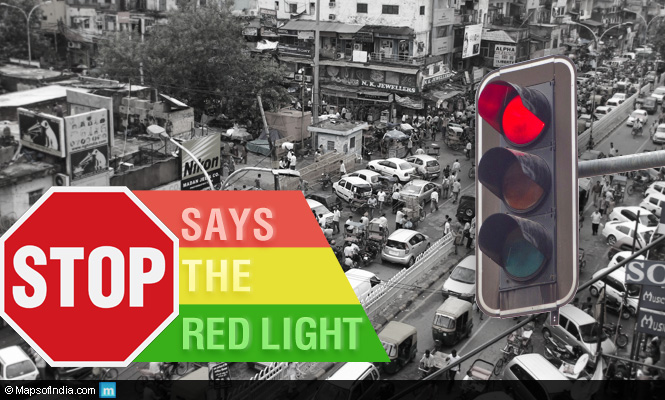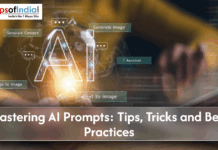As I begin writing this article on the Traffic Situation in India, I hum a rhyme I learnt as a child. Stop says the red light, go says the green, changing says the amber one, blinking in between. In India, it is time to show the red light to traffic till the conditions change and the signal can be turned green again. And we, the people of India, have to contribute as responsible citizens towards a better network of traffic.
Pedestrian traffic
Pedestrians in India feel they have the right of way no matter how fast a vehicle is coming towards him/her. By just an inconspicuous move of hand, they expect the vehicle to stop so that they can cross the road. Abroad, the pedestrians do have a right of way, wherein they are expected to press a button, known as the Beg Buttons, on the sidewalk, which changes the signal light from green to red. This is more organised, unlike in India, where anyone just comes in the way of moving traffic.
There are no proper sidewalks to walk on and people can be found walking on the road along with the moving traffic. Even if there are sidewalks, they are infested with hawkers and shoppers, again forcing a pedestrian on the road. Zebra crossings, if present at all, are fading in most of the places and people cross the road from where ever they find it convenient. Apart from causing congestion of traffic, the pedestrians also put their lives in danger.
Right of Way
In India, right of way does not include fast moving vehicles. The rule is that the bigger the vehicle, the more right of way it has. So it can be found that trucks and other big vehicles, even at a slower speed are moving on the right side of the road blocking the way of other faster moving vehicles. Thus the traffic gets congested. Even vehicles like Autos and Scooters do not move on the left side, staying in the centre of the road and as such blocking the smooth movement of traffic.
No Proper testing mechanism of drivers
In India, no proper driving tests are conducted. A person just has to contact an agent, who in exchange of a measly sum of Rs. 1,500/- will get a license valid for a period of 30 years. As a result, most of the drivers on the streets of India, are novices, who have learnt driving by the trial and hit (or should I say Hit and Run) method. They do not know anything about the traffic rules and blatantly flout each and every regulation of traffic. Those who cannot afford to pay even the sum of Rs. 1,500/- for a license, feel free to drive without a license. There many honest traffic constables in India. But the truth is that there are also an equal number of dishonest ones. And drivers without license, if caught, just bribe their way out of trouble in most of the cases.
Age No Bar
In India, for obtaining a licence to drive motorcycles with an engine capacity of 55 cc or less, the minimum age is 16. One must be 18 years or older to drive any other type of vehicle. However, one can see under 16 year olds driving motorcycles on the busy streets and under 18-years-olds driving cars. This is where the Indian parent comes into scene. We as parents should see to it that our children are not breaking rules and regulations. While driving on a traffic congested road when we are cursing all the other drivers of the wrongs that they are doing, we should be clear in our conscious that we have not done anything wrong.
Huge rise in vehicles in India
In the last decade, the increase in the number of vehicles on the road is astounding. Again we the people of India are to be blamed. We do not believe in car pools, and in many cases the status conscious people do not believe in commuting by public transport. Thus one can see a single individual in a car, which seats a minimum of 4 people, driving to the place of work. We do not realise that the more the number of vehicles the more the traffic jam. Other related problems also arise because of this, viz. parking woes, unnecessary consumption of fuel, and increase in both air and noise pollution. In Bangalore it takes 45 mins to cover a distance of 5-6 kms at the peak office hours. Here the people do not talk in terms of kms when they talk about distance. They talk in terms of time taken.
Ways out
We, as Indians, have to contribute towards a better Traffic Scenario in India. There are many ways and the following are just a few.
- The government should ensure proper sidewalks and no encroachment by hawkers.
- Pedestrians should be forced to walk only on sidewalks or fined. They must not be allowed to walk on highways.
- CCTV cameras should be installed at all important junctures and any vehicle breaking the rule of traffic, like the right of way, should be immediately impounded.
- A proper written and driving test should be conducted before the driving license is issued. We as the citizens should see to it that we have gone through the rigmarole before we obtain a license.
- Seat belts and helmets should be made absolutely compulsory.
- Honking of horns should be restricted within specific time periods to reduce the sound pollution.
- Like in London, a Congestion Charge should be introduced, where vehicles plying at peak hours have to pay a toll. This reduces traffic and raises money to improve traffic.
- Wherever possible, we should use public transport and also adopt the policy of Car pools.
- Last but not the least, we, the citizens of India, should be conscientious about the rules, and not try to bribe our way out of trouble.
It is time to make a change for a better tomorrow.
Read More:
Traffic Signs and Road Safety in India
Worst road accidents in India
Stop! Says The Red Light
Road Rage in Delhi: Keep Your Cool, Avoid the anti-Socials
India’s Tourism Sector: Achievements and the Road Ahead
Traffic Congestion in Delhi: Causes, Outcomes and Solutions
How to keep yourself entertained during long road trips?
Agra-Lucknow Expressway: India’s First Road Runway
List of Major Rail Accidents in india





